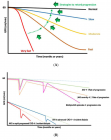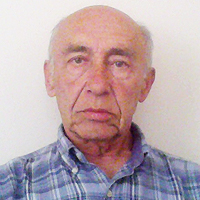About Erciyes University
Erciyes University
Articles by Erciyes University
A rare case: Congenital Megalourethra in prune belly syndrome
Published on: 30th January, 2018
OCLC Number/Unique Identifier: 7355941035
Introduction: Prune Belly syndrome is a disease characterized by abdominal muscle defect, bilateral cryptorchidsim and urinary system anomalies (reflux megaureter, hydronephrosis, etc.). Pulmonary, cardiac, and gastrointestinal anomalies may also be present. Management of these rare cases is very important. In this case, the clinical course of a patient with Prune Belly syndrome with megaurethra is presented.
Case: The patient from the first gestation and parturition with birth weight of 2500 g and 38 weeks was hospitalized because of the bilateral hydronephrosis. His physical examination revealed undescended testicles and a large penis. The abdominal muscles were not very atrophic. The size of the kidney was small, bilateral hydroureteronephrosis and wide posterior urethra on the ultrasound. Renal function tests were progressively disturbed and the patient underwent cystourethroscopy for diagnostic purposes in terms of posterior urethral valve. A large diverticulum was found in anterior urethra. Prune Belly Syndrome was thought because the orifices were in appearance of reflux. The vesicostomy was applied. After vesicostomy the renal function tests got better but he was hospitalized due to urosepsis two times. In cystoscopic examination, the diverticulum in the urethra was filled with urine and the drainage was very slow. Phimosis was opened with dorsal slit technique. Cutaneous urethrostomy was proximal to the anterior diverticulum.
Conclusion: Prune Belly syndrome should be considered in patients with megaurethra and postrenal or renal insufficiency although there are no obvious clinical findings. In Prune Belly cases, via a large penis with obstruction signs, anterior urethral diverticulum should be considered.
Clinical, histopathological and surgical evaluations of persistent oropharyngeal membrane case in a calf
Published on: 5th August, 2019
OCLC Number/Unique Identifier: 8198752192
A male, 4 days old and 20 kg Simmental calf was evaluated for regurgitation and hyper salivation since birth. The mother became pregnant by artificial insemination and the pregnancy was the second of the mother. A membrane closed the pharynx and a diverticulum on dorsal of this membrane was seen during oropharyngeal examination through inspection. Membrane was also viewed by endoscopy under general anaesthesia. Larynx and oesophagus were imaged by bronchoscopy through the back side of the membrane. After these applications, it was decided that soft palate adhered firmly to the root of tongue causing congenital atresia. Surgical treatment of oropharyngeal membrane was carried out under general anaesthesia. Firstly, tracheotomy was performed for to ease breathing and membrane removed by electrocautery application. Intensive fluid accumulation and oedema formation at the incision area were detected by endoscopic examination following operation and the calf had severe dyspnoea two days after operation and died due to respiratory insufficiency. At necropsy, severe inflammatory reaction, laryngeal oedema and intensive salivation at the surgical side was determined. Direct imaging techniques should be used to determine in the closed oropharyngeal lumen. Moreover, nasopharyngoscopy should be considered to image larynx and oesophageal way. Present case is the first report with concern to pharyngeal membrane formation together with direct imaging and surgical procedures. Therefore, it was considered that this case report could be useful for colleagues and literatures.
Giant prolactinoma case with side effects due to cabergoline
Published on: 16th March, 2020
OCLC Number/Unique Identifier: 8559315208
Dopamine agonists should usually be the first treatment for patients with prolactinomas of all sizes, because these drugs decrease serum prolactin concentrations and decrease the size of most lactotroph adenomas. Cabergoline is preferred first. When cabergoline develops side effects bromokriptin is switched. Cabergoline is more efficient than bromocriptine. Its side effect profile more favorable than bromocriptine. Cabergoline is an ergot dopamine agonist that is administered once or twice a week. Cabergoline can have rarely serious psychiatric adverse effects, including psychosis, impulse control disorders, dyskinesia, pulmonery fibrosis and valvular heart disease.
Prolactinomas are the most common pituitary tumors, 93%-95% of the cases are microadenomas. Macroprolactinomas larger than 40 mm, known as giant prolactinomas, are exceptionally rare, accounting for 0.5% - 4% of all prolactin-hypersecreting adenomas.
In our case, after the 7 x 6 cm giant macroprolactinoma operated we report the manic episode occuring during the second week of cabergoline treatment. In the treatment of patients with prolactinoma, cabergoline is a first choice drug because it has a better tolerance profile and is more effective, however, bromocriptine can be switched to when drug resistance or side effects develop to cabergoline.
Determination of body image perception and life satisfaction in patients undergoing hemodialysis
Published on: 9th July, 2020
OCLC Number/Unique Identifier: 8628635367
Objective: This descriptive study was conducted in order to determine body image perception and life satisfaction of individuals undergoing hemodialysis treatment.
Material and methods: The population of the study consisted of individuals who were treated in hemodialysis units in the city center of Kırşehir. Patients. The study was conducted with 135 patients. Questionnaire, multidimensional body-self relations questionnaire, and satisfaction with life scale were used as data collection tool.
Results: According to study results, total mean scores of MBSRQ were significantly low in individuals who were older than 65, illiterate, had an extended family, were unemployed, had low income, suffered from disease and underwent hemodialysis treatment for 10 years and longer, had arteriovenous fistula in vascular insertion site, had body mass index within the class of morbid obese, and had no planned transplantation. SWLS mean scores of individuals, who were in the age group of 25-34 years, high school graduate, employed, described their income status as very high, had CRF for 6-12 months, underwent hemodialysis for 6-12 months, were waiting for renal transplantation, were significantly high. As a result of the correlation analysis made between body image and life satisfaction, it was determined that there was a positive, quite significant correlation
Conclusion: As a result, it was determined that hemodialysis patients were affected by body image and life satisfaction negatively due to many factors and the total score of body image scale was very low.
Status of hemodialysis patients using complementary and alternative medicine practices during the COVID-19 pandemic
Published on: 31st August, 2022
The use of complementary and alternative medicine (CAM) applications increased by 39.3% of individuals with chronic diseases during the pandemic process in Turkey. For this reason, this descriptive study was conducted to determine the use of integrative and integrated medicine practices in hemodialysis patients during the COVID-19 pandemic. The population of the study consisted of individuals who were treated in a hemodialysis unit in the city center (n = 235). It was planned to include whole of the population by using the whole number method, but patients, who did not agree to participate in the study and did not meet the inclusion criteria of the study, were excluded from the sample and the study was conducted with 160 patients between 1 June and 1 September 2021. As a data collection tool, a questionnaire consisting of 30 questions including socio-demographic and disease characteristics of the patients was prepared by the researcher upon review of related literature. Considering the distribution of phytotherapy method (herbal treatment) usage frequency of integrative and integrated medicine applications of individuals before the COVID-19 pandemic and during the COVID-19 pandemic period, the most vitamins (21.8%), prebiotics (12.5%), and honey (%) 10.6), their use was found to be high. During the COVID-19 pandemic, the use of massage (40%), breathing exercises (30.0%) and spiritual therapy (28.7%) applications increased. As a result, it is seen that integrative and integrated applications are considered in the process of dealing with hemodialysis patients. Physicians need to be aware of and ask patients about their use of integrated and integrated health practices.

HSPI: We're glad you're here. Please click "create a new Query" if you are a new visitor to our website and need further information from us.
If you are already a member of our network and need to keep track of any developments regarding a question you have already submitted, click "take me to my Query."
















































































































































